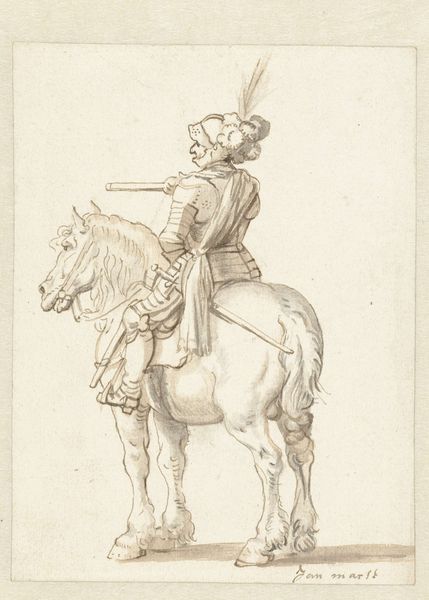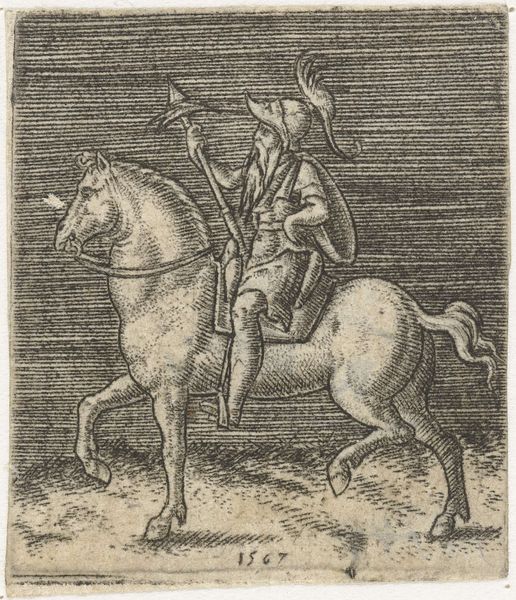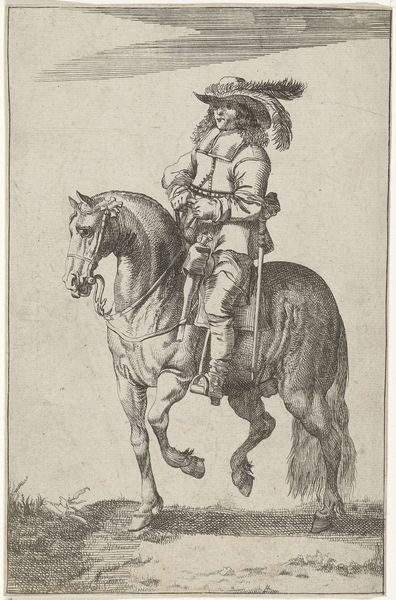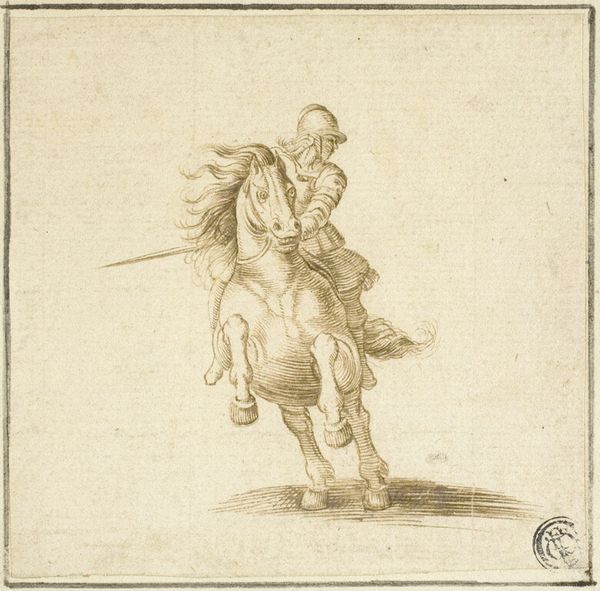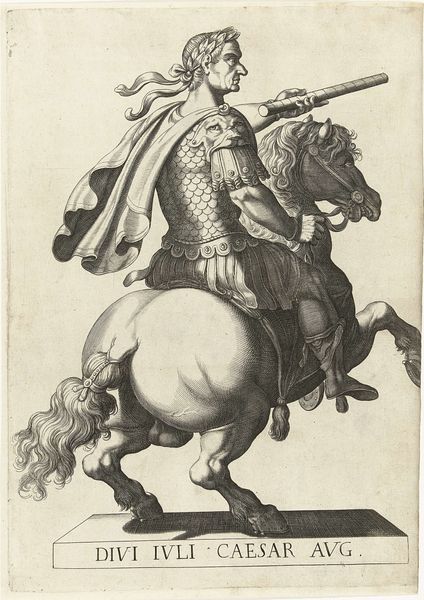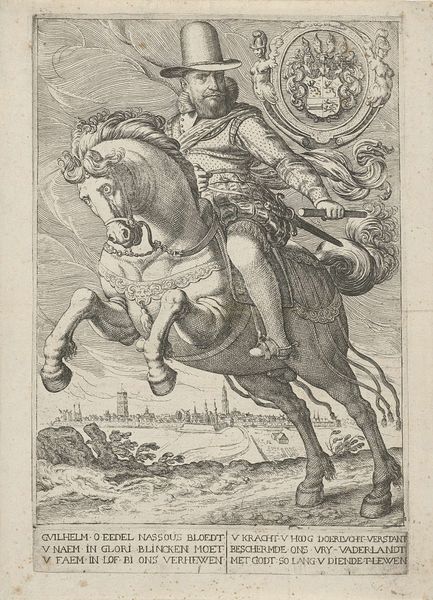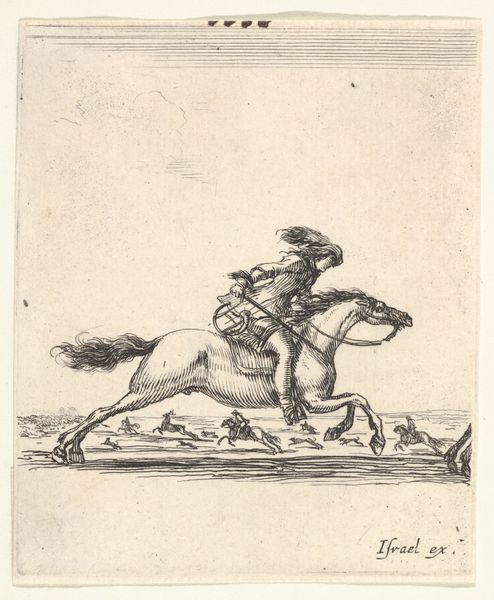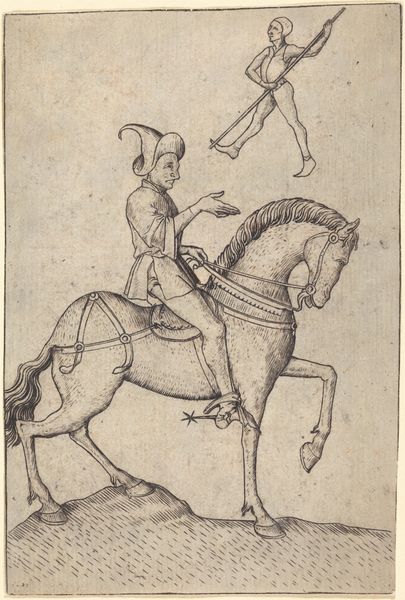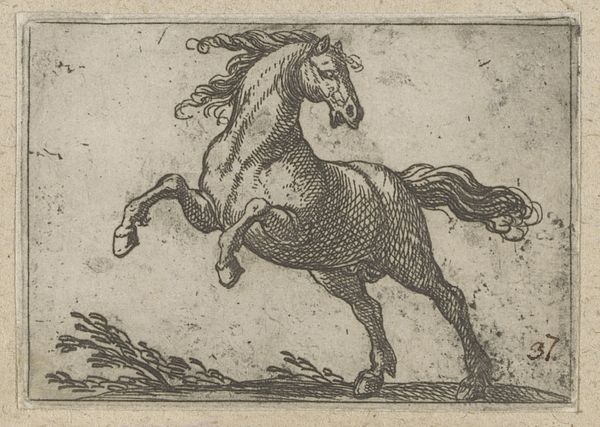
engraving
#
portrait
#
baroque
#
figuration
#
history-painting
#
engraving
Dimensions: height 199 mm, width 129 mm
Copyright: Rijks Museum: Open Domain
Editor: Here we have "Ruiter op een steigerend paard," or "Rider on a rearing horse," an engraving from between 1623 and 1703, housed here at the Rijksmuseum. It has a stoic mood. I find the upward tilt of the horse to be visually intriguing. What stands out to you most when you look at it? Curator: It's tempting to view this as simply a portrayal of power and nobility, and the Baroque style certainly lends itself to that interpretation. But I wonder, can we consider this image through a critical lens? Who had access to this type of representation, and whose stories are left out? Consider the social hierarchy embedded within equestrian portraiture; the way it traditionally served to legitimize authority and reinforce existing power structures. Editor: So, it's more than just a picture of a guy on a horse? Curator: Precisely. Think about the cultural context. During this period, Europe was embroiled in religious and political conflict. Equestrian portraits like this weren't just about celebrating an individual; they were often used to project an image of strength and stability in times of upheaval. But what does stability mean when it is only available for some and acquired at the direct expense of others? Editor: That's a perspective I hadn't considered. So, looking at it today, are you saying we should question the values it represents? Curator: Exactly! By acknowledging the power dynamics at play, we can engage with the artwork more critically and thoughtfully. We need to interrogate how historical representations impact our understanding of contemporary issues of power and inequality. Editor: I’ve never thought about art this way before. It's much more nuanced than I previously understood. Curator: It is! Engaging with art is always a process of continual unlearning and questioning.
Comments
No comments
Be the first to comment and join the conversation on the ultimate creative platform.


